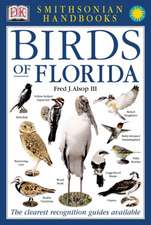Current Ornithology: Current Ornithology, cartea 16
Editat de Val Nolan Jr., Charles F. Thompsonen Limba Engleză Hardback – 30 noi 2001
| Toate formatele și edițiile | Preț | Express |
|---|---|---|
| Paperback (1) | 951.59 lei 6-8 săpt. | |
| Springer Us – 20 sep 2012 | 951.59 lei 6-8 săpt. | |
| Hardback (1) | 958.07 lei 6-8 săpt. | |
| Springer Us – 30 noi 2001 | 958.07 lei 6-8 săpt. |
Preț: 958.07 lei
Preț vechi: 1168.38 lei
-18% Nou
Puncte Express: 1437
Preț estimativ în valută:
183.33€ • 196.04$ • 152.85£
183.33€ • 196.04$ • 152.85£
Carte tipărită la comandă
Livrare economică 18 aprilie-02 mai
Preluare comenzi: 021 569.72.76
Specificații
ISBN-13: 9780306464867
ISBN-10: 0306464861
Pagini: 424
Ilustrații: XX, 424 p.
Dimensiuni: 155 x 235 x 25 mm
Greutate: 0.81 kg
Ediția:2001
Editura: Springer Us
Colecția Springer
Seria Current Ornithology
Locul publicării:New York, NY, United States
ISBN-10: 0306464861
Pagini: 424
Ilustrații: XX, 424 p.
Dimensiuni: 155 x 235 x 25 mm
Greutate: 0.81 kg
Ediția:2001
Editura: Springer Us
Colecția Springer
Seria Current Ornithology
Locul publicării:New York, NY, United States
Public țintă
ResearchCuprins
1 Avian Coloniality: Progress and Problems.- 1. Introduction.- 2. Historical Background.- 3. Phylogenetic Analyses.- 4. Limitation of Breeding Sites.- 5. The Costs and Benefits of Coloniality.- 6. Social Foraging and Coloniality.- 7. Reproductive Success and Habitat Selection.- 8. Sexual Selection and Coloniality.- 9. Variation in Colony Size.- 10. Prospectus.- References.- 2 Begging in Nestling Birds.- 1. Parent–Offspring Conflict.- 2. The Importance of Signaling.- 3. Begging Signals.- 4. Begging as Competition among Nestmates.- 5. The Importance of Offspring Sex.- 6. The Role of Biparental Care.- 7. An Alternative Perspective.- 8. Conclusions.- References.- 3 Ecological Aspects of Neophobia and Neophilia in Birds.- 1. Introduction.- 2. How Neophobia and Neophilia Are Studied.- 3. What Determines the Intensity of Neophobia and Neophilia in Adult Birds.- 4. Exploration in Juvenile Birds.- 5. Comparative Studies of Neophobia and Exploration.- 6. Conclusions and Future Directions.- References.- 4 Avian Quantitative Genetics.- 1. Introduction.- 2. Components of Phenotypic Variation.- 3. Tools of the Trade.- 4. Empirical Data.- 5. Maternal Effects.- 6. Extra-Pair Paternity.- 7. Quantitative Genetics of Fitness.- 8. Genotype-Environment Interactions.- 9. Genetic Basis of Population Differentiation.- 10. Applications of Quantitative Genetics to Avian Evolution.- 11. Further Prospects.- 12. Conclusions.- References.- 5 Male Parental Care and Paternity.- 1. Introduction.- 2. Theoretical Models.- 3. Field Studies: Testing Predictions and Assumptions.- 4. Interspecific Analyses.- 5. Conclusions and Future Directions.- References.- 6 Physiological Ecology and Behavior of Desert Birds.- 1. Introduction.- 2. Energy.- 3. Water.- 4. Thermoregulation.- 5. Optimization Processes.- 6.Summary.- References.- 7 Reproductive Energy Expenditure, Intraspecific Variation and Fitness in Birds.- 1. Introduction.- 2. Is Reproduction Energetically Costly, and at What Stage Is It Most Costly?.- 3. Intraspecific Variation in Daily Energy Expenditure: Biological Variation or Measurement Error?.- 4. Repeatability of Daily Energy Expenditure Measurements.- 5. Individual, Environmental, and Activity-Related Correlates of DEE.- 6. Metabolic Rate and Body Mass: Intraspecific versus Interspecific Scaling.- 7. Relationships between DEE and Measures of Reproductive Effort or Fitness.- 8. Conclusions and Recommendations for Future Research.- References.
















